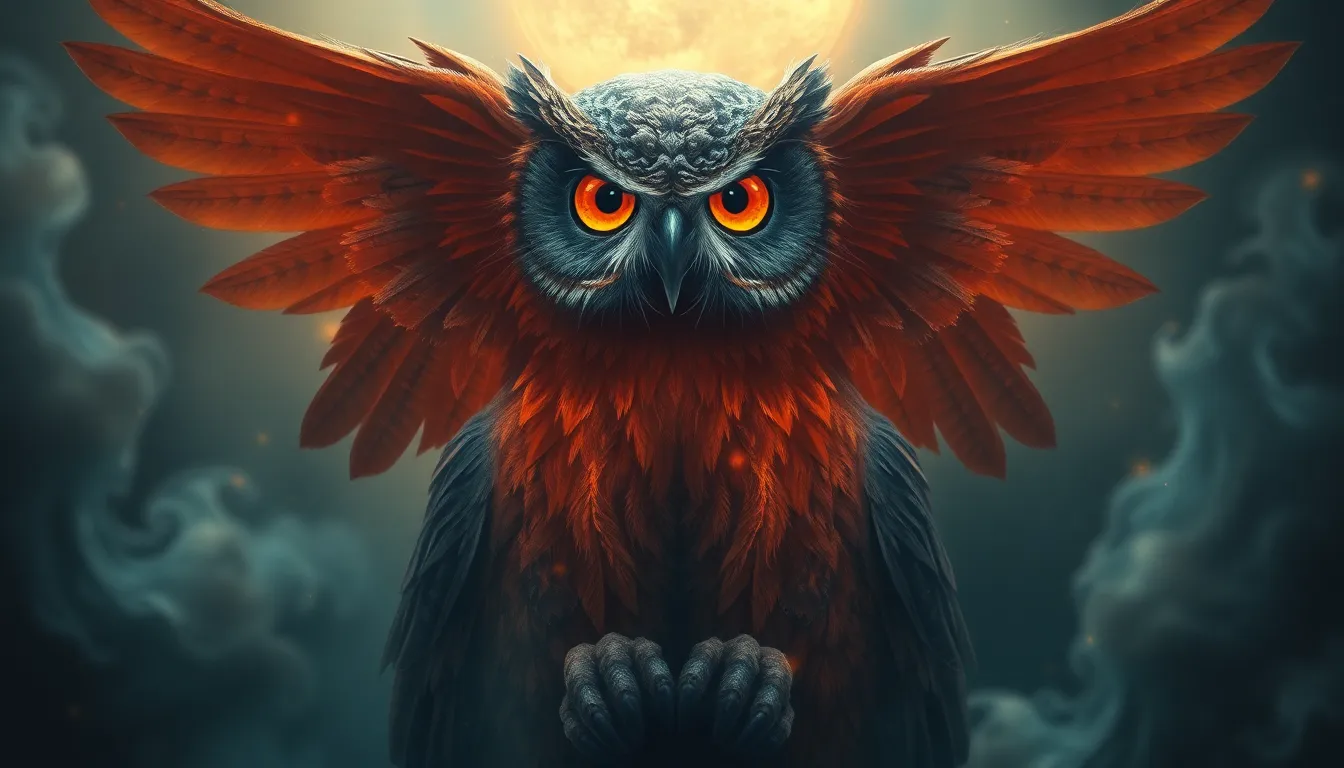The Sacred Owl: Wisdom and Mystery in Folklore
Introduction: The Enigmatic Presence of the Owl in Culture
The owl has long captivated human imagination, symbolizing a myriad of concepts across various cultures. Its nocturnal nature and haunting calls have woven it into the fabric of folklore, representing wisdom, mystery, and even foreboding. In many societies, the owl stands as a bridge between the known and the unknown, embodying both the light of knowledge and the shadows of the night.
Historical Significance of Owls in Ancient Civilizations
Throughout history, owls have played significant roles in ancient civilizations. In Ancient Greece, the owl was dedicated to Athena, the goddess of wisdom. This association cemented the bird’s reputation as a symbol of insight and intelligence.
- Ancient Greek Mythology: The owl, particularly the Little Owl (Athene noctua), was seen as a protector of the city and was often depicted in art and coinage.
In contrast, the Egyptians revered owls as symbols of protection and the afterlife. The owl was often depicted in tomb paintings, signifying the transition from the earthly realm to the spiritual.
- Egyptian Beliefs: The owl was associated with the goddess of the dead, and its presence was believed to guide souls through the afterlife.
Owls in Indigenous Folklore: Guardians of the Night
For many Native American tribes, owls are regarded as powerful omens and spiritual guides. Their calls are often interpreted as messages from the spirit world, emphasizing their role in indigenous narratives.
- Spirit Guides: In various tribes, owls are seen as protectors and guides that offer wisdom in times of need.
- Omen Interpretation: The appearance of an owl can signify impending change or serve as a warning of danger.
Symbolism of the Owl in Eastern Cultures
The symbolism of owls extends deeply into Eastern cultures as well. In Japan, owls are often viewed as symbols of luck and protection. Their image is frequently used in talismans to attract good fortune.
- Japanese Folklore: Owls are celebrated for their ability to see in the dark, representing wisdom and the ability to navigate through life’s challenges.
Conversely, in Chinese mythology, owls are often associated with death and misfortune. Their nocturnal habits and eerie calls contribute to this perception, leading to a more ominous representation in folk tales.
- Chinese Beliefs: The presence of an owl can signify the approach of death or bad luck, showcasing a stark contrast to their Japanese counterparts.
The Dual Nature of the Owl: Wisdom vs. Fear
The owl embodies a duality that intrigues and mystifies. While it is widely recognized as a symbol of wisdom, its association with death and misfortune complicates this perception. Different cultures hold conflicting beliefs about the owl’s nature.
- Wisdom: Seen as a guide and a source of knowledge, the owl’s ability to see in darkness is often metaphorically linked to insight.
- Fear: On the other hand, the owl’s nocturnal habits and eerie sounds can evoke feelings of fear and apprehension, particularly in cultures where they are seen as omens of death.
Contemporary Interpretations of Owl Symbolism
In modern society, the imagery of owls has experienced a resurgence in popularity. They are frequently depicted in popular culture, fashion, and spirituality.
- Modern Spirituality: Owls are embraced in contemporary spiritual practices, often symbolizing intuition and the journey of self-discovery.
- Pop Culture: From children’s literature to tattoos, owls have become a fashionable motif, representing both wisdom and whimsy.
Owls as Symbols of Knowledge in Literature and Art
Literature and art have long celebrated the owl as a symbol of knowledge and wisdom. Various literary works feature owls as significant beings that impart lessons or foreshadow events.
- Famous Literary Works: Owls appear in numerous stories, such as in Aesop’s fables, where they often embody wisdom and caution.
- Visual Art: Artists have represented owls in various forms, from ancient sculptures to modern paintings, emphasizing their connection to knowledge and the night.
The Psychological Impact of Owls in Folklore
The psychological associations of owls with intuition and insight have profound effects on human behavior. Owls are often viewed as symbols that inspire reflection and deep thinking.
- Intuition: The owl’s ability to navigate the dark is often seen as a metaphor for trusting one’s instincts.
- Influence on Decision-Making: Folklore surrounding owls can affect how individuals perceive risk and safety, shaping their choices and behaviors.
Conservation and the Cultural Significance of Owls Today
As modern society becomes increasingly aware of environmental issues, the cultural significance of owls has prompted conservation efforts. Preserving owl habitats is crucial for maintaining their populations and the ecological balance.
- Habitat Preservation: Efforts focus on protecting natural habitats to ensure the survival of various owl species.
- Educational Initiatives: Programs are being developed to educate communities about the ecological role of owls and the importance of biodiversity.
Conclusion: The Enduring Legacy of the Sacred Owl
The owl’s multifaceted symbolism in folklore reflects deep-rooted beliefs that span across cultures and centuries. From its revered status in ancient civilizations to its modern interpretations, the owl continues to captivate and inspire. As we navigate through contemporary society, the myths and legends surrounding this sacred bird remind us of the wisdom and mystery that still dwell in our world.


